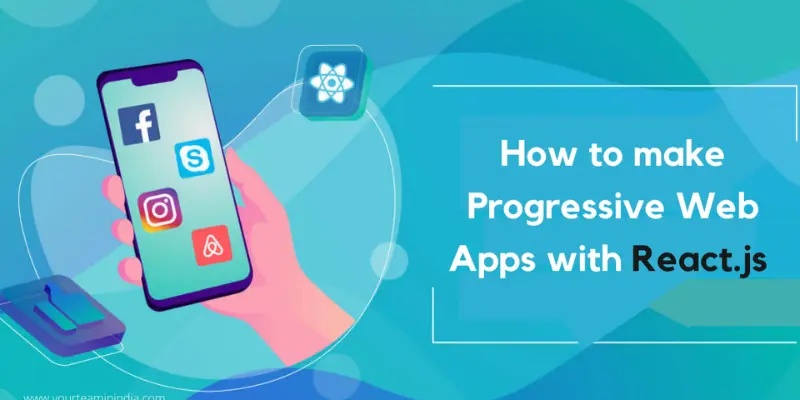In today’s fast-paced world, Progressive Web Applications (PWAs) have become increasingly popular due to their ability to provide users with a seamless, app-like experience directly from their browsers. PWAs offer the unique capability of combining web and mobile experiences, providing offline functionality, push notifications, and enhanced user experiences. For developers, building a PWA in React.js is a powerful way to leverage modern web technologies for a high-performance application. Whether you’re a beginner or an experienced developer, enrolling in React JS Training in Bangalore can help you master the skills required to create stunning PWAs with ease. In this blog, we’ll explore how to build a PWA using React.js and Java, forming a robust foundation for developing scalable and dynamic applications.
What Is a PWA?
Before diving into how to build a PWA in React.js, let’s clarify what a Progressive Web Application (PWA) actually is. PWAs are web applications that use modern web capabilities to deliver an experience that closely mirrors that of native mobile apps. They load quickly, work offline, and can be added to a user’s home screen, all without requiring downloads from an app store. Building a PWA in React.js can be particularly advantageous due to React’s modular architecture and fast rendering capabilities.
By using Programming Courses to gain foundational skills, you can prepare yourself to build these modern, high-performing applications. PWAs are known for their ability to function offline and under poor network conditions, which is achieved through effective caching strategies managed by service workers.
Why Use React.js for PWAs?
React.js is one of the most popular JavaScript libraries, renowned for its flexibility, performance, and ease of use. When building a PWA in React.js, developers benefit from its efficient rendering via the virtual DOM and component-based architecture, which promotes code reuse and scalability. Additionally, coupling React.js with Java on the backend provides a full-stack solution that is both performant and reliable.
With React.js, you can build highly responsive user interfaces that feel smooth and intuitive. The modular approach in React allows for easy code maintenance and scaling, making it ideal for PWA development. If you’re serious about a career in full-stack development, investing in Java Training in Bangalore will ensure you have the skills necessary to handle both front-end and back-end development tasks effectively.
Setting Up the Project
To begin building a PWA in React.js, you’ll need to set up a basic React project. Thanks to tools like Create React App, setting up your development environment for PWAs has never been easier.
- Install Node.js and npm: Begin by making sure Node.js and npm are installed on your PC. These are essential for handling your project’s dependencies.
- Create a React App: Open your terminal and enter the following command to build a new React app:
- Enable PWA in React.js: Once the project is created, you’ll need to enable the service worker to add offline capabilities. Navigate to src/index.js and update the serviceWorker.unregister(); line to serviceWorker.register();.
Following these steps will prepare your basic PWA setup in React.js for further development. If you’re just starting out and need hands-on guidance, enrolling in the right course can help accelerate your learning process. Similarly, for those interested in backend development, Java Training in Marathahalli will give you the necessary skills to handle the back-end logic seamlessly.
Implementing Key PWA Features
With your React.js app set up, it’s time to implement some key features that are essential for PWAs—offline functionality, service workers, and push notifications. These features ensure that your PWA provides a robust and engaging user experience.
- Service Worker: The service worker is a key feature in any PWA. It handles caching essential assets such as HTML, CSS, and JavaScript files, allowing the application to work offline. Create React App generates a basic service worker by default, but you can customize it to cache dynamic content as well.
- App Manifest: The web app manifest is a simple JSON file that defines how your PWA appears to users. It includes settings such as the app name, icons, and background color. Customize the manifest.json file in the public folder to match your app’s branding.
- Offline Functionality: Offline functionality is a core benefit of PWAs. By enabling caching through service workers, your React app can load essential files even when there is no internet connection. You can utilize libraries like Workbox to fine-tune your offline experience for more advanced caching strategies.
- Push Notifications: Push notifications are an excellent way to keep users engaged. Implementing them in React.js is straightforward with the help of libraries such as Firebase. They allow you to send updates, news, or promotional content directly to users, ensuring that your app stays top of mind.
While React.js handles the frontend, integrating it with Java for the backend can lead to a highly efficient full-stack application. Java-based frameworks like Spring Boot can be used to create RESTful APIs that communicate with the React frontend, providing a scalable and secure architecture for your PWA.
To integrate React.js with Java, you can create a REST API in Spring Boot and use Axios or Fetch API in your React components to call these APIs. This allows seamless data exchange between the frontend and backend, making your PWA in React.js highly dynamic and functional.
Building a Progressive Web Application (PWA) in React.js is an excellent way to deliver a native-like experience on the web, offering users speed, offline capabilities, and enhanced performance. By leveraging React.js for the frontend and Java for the backend, you can create a powerful, scalable application that meets modern user demands. Whether you’re developing a simple web app or a complex full-stack solution, PWAs in React.js provide the flexibility and efficiency needed to succeed in today’s digital landscape. If you want to enhance your skills further, exploring Programming Courses in Bangalore can be a great way to strengthen your knowledge in front and backend development.
